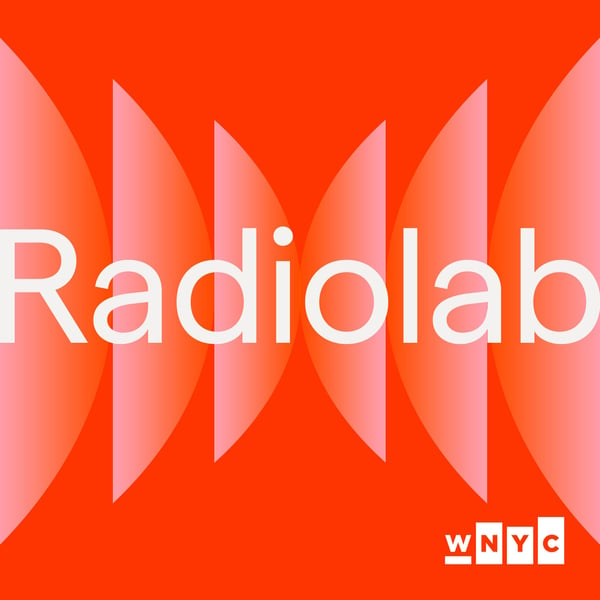Little Black Holes Everywhere
Radiolab
WNYC Studios
4.6 • 43.5K Ratings
🗓️ 28 July 2023
⏱️ 35 minutes
🧾️ Download transcript
Summary
In 1908, on a sunny, clear, quiet morning in Siberia, witnesses recall seeing a blinding light streak across the sky, and then… the earth shook, a forest was flattened, fish were thrown from streams, and roofs were blown off houses. The “Tunguska event,” as it came to be known, was one of the largest extraterrestrial impact events in Earth’s history. But what kind of impact—what exactly struck the earth in the middle of Siberia?—is still up for debate. Producer Annie McEwen dives into one idea that suggests a culprit so mysterious, so powerful, so… tiny, you won’t believe your ears. And stranger still, it may be in you right now. Or, according to Senior Correspondent Molly Webster, it could be You.EPISODE CREDITS Reported by - Annie McEwen and Molly WebsterProduced by - Annie McEwen and Becca Bresslerwith help from - Matt KieltyOriginal music and sound design contributed by - Jeremy Bloom, Annie McEwen, Matt KieltyMixing by - Jeremy Bloomwith dialogue mixing by - Arianne WackFact-checking by - Diane Kellyand edited by - Alex Neason
GUESTS Matt O’Dowd (https://www.mattodowd.space/)Special Thanks:
Special thanks to, Matthew E. Caplan, Brian Greene, Priyamvada Natarajan, Almog Yalinewich
EPISODE CITATIONS
Videos: Watch “PBS Space Time,” (https://zpr.io/GNhVAWDday49) the groovy show and side-gig of physicist and episode guest Matt O’Dowd
Articles: Read more (https://zpr.io/J4cKYG5uTgNf) about the Tunguska impact event! Check out the paper (https://zpr.io/vZxkKtGQczBL), which considers the shape of the crater a primordial black hole would make, should it hit earth: “Crater Morphology of Primordial Black Hole Impacts”Curious to learn more about black holes possibly being dark matter? You can in the paper (https://zpr.io/sPpuSwhGFkDJ), “Exploring the high-redshift PBH- ΛCDM Universe: early black hole seeding, the first stars and cosmic radiation backgrounds”
Books:
Get your glow on – Senior Correspondent Molly Webster has a new kids book, a fictional tale about a lonely Little Black Hole (https://zpr.io/e8EKrM7YF32T)
Our newsletter comes out every Wednesday. It includes short essays, recommendations, and details about other ways to interact with the show. Sign up (https://radiolab.org/newsletter)!
Radiolab is supported by listeners like you. Support Radiolab by becoming a member of The Lab (https://members.radiolab.org/) today.
Follow our show on Instagram, Twitter and Facebook @radiolab, and share your thoughts with us by emailing [email protected].
Leadership support for Radiolab’s science programming is provided by the Gordon and Betty Moore Foundation, Science Sandbox, a Simons Foundation Initiative, and the John Templeton Foundation. Foundational support for Radiolab was provided by the Alfred P. Sloan Foundation.
Transcript
Click on a timestamp to play from that location
| 0:00.0 | Hey, I'm Molly Webster. I'm Lulu Miller. And this is Radio Lab. And today we have two |
| 0:23.8 | very different stories from two very different reporters, one of whom is you Molly. Yeah. Who each |
| 0:30.5 | got pulled down into the same very strange and very dark place. All right. Okay. Thank you for |
| 0:38.8 | joining me. And we're going to begin with producer Annie McEwan. Yeah. Yeah. Well, where do you want |
| 0:44.4 | to start? Where do I want to start? I want to start in Siberia. Okay. Okay. So the year is 1908. |
| 0:54.5 | It is June. It is a bright sunny morning. And in this remote part of Russia, it's mostly forest, |
| 1:02.5 | swamp, bugs, reindeer. The few people in the area are waking up, stretching their legs, making breakfast, |
| 1:10.3 | and everything's cool. Okay. It is promising to be just a beautiful day. |
| 1:17.1 | But that is all about to change, because just after 7 a.m., something appears low in the sky |
| 1:24.9 | as bright as the second sun. From oral histories gathered years later, people reported looking up |
| 1:31.4 | and seeing this thing rocketing towards Earth faster than a bullet. It quickly grows into a giant |
| 1:38.3 | ball of fire, dragging behind at this tail of blue and white light. Whoa. It arcs across the sky |
| 1:45.5 | disappearing over the horizon. And then a shock wave pulses through the forest, flattening trees, |
| 1:55.5 | shattering windows, throwing people to the ground. The earth shakes. Boats are tossed from rivers. |
| 2:01.9 | Some people reported a hot-blast wind. Others reported a colossal amount of smoke and fire. |
| 2:08.9 | And luckily, because it's such a remote region, despite the fact that 800 square miles of |
| 2:15.3 | forest were flattened, only somewhere between zero and three people are killed. |
| 2:22.6 | Huh. Wow. And I don't know, either have you heard of this before? It's called the Tunguska event. |
| 2:29.5 | No, I've never heard of it. Tunguska. Tunguska. That's the town. That's the nearby river. |
| 2:35.4 | And today, this is still considered the largest impact event in recorded human history. |
| 2:40.9 | So, like an impact. So there's a something that like hit us. Yes. Well, maybe. Hmm. |
| 2:49.7 | Okay. So, a bunch of scientists go plunging into the forest to try to figure out what the heck just |
... |
Please login to see the full transcript.
Disclaimer: The podcast and artwork embedded on this page are from WNYC Studios, and are the property of its owner and not affiliated with or endorsed by Tapesearch.
Generated transcripts are the property of WNYC Studios and are distributed freely under the Fair Use doctrine. Transcripts generated by Tapesearch are not guaranteed to be accurate.
Copyright © Tapesearch 2025.

